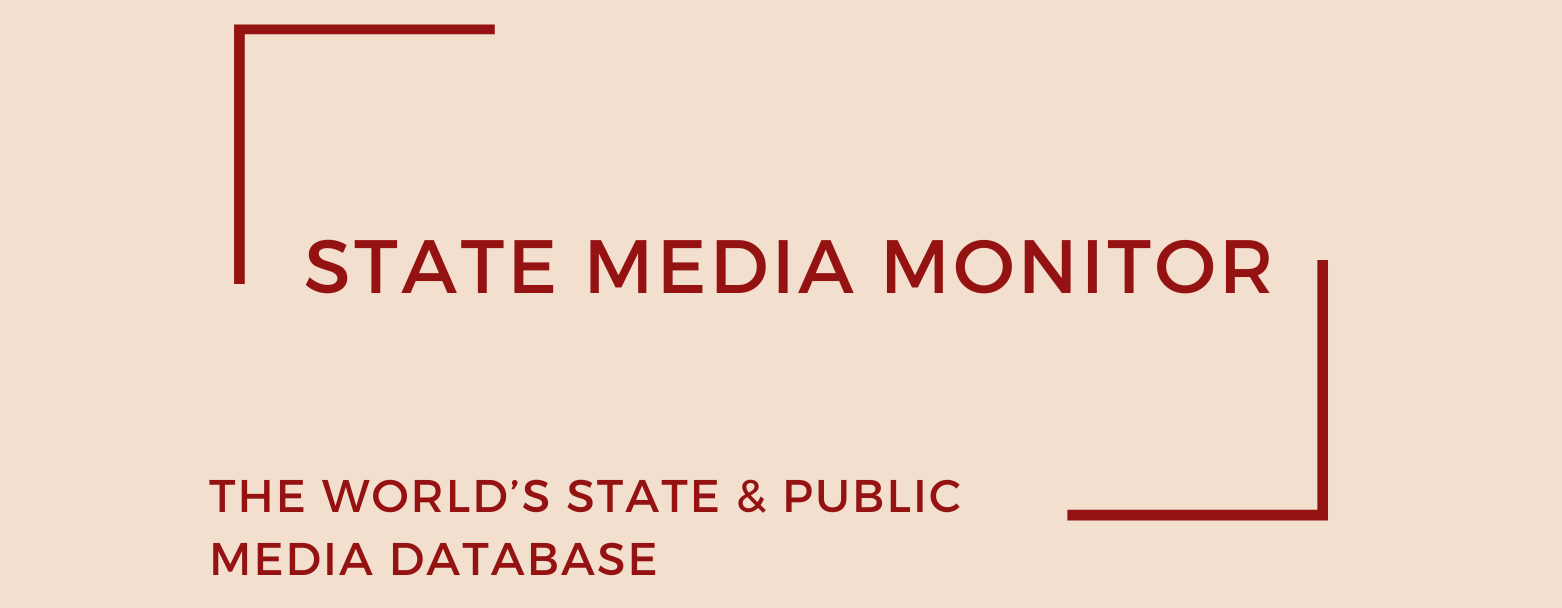Stolichnoye Televideniye (STV)
Stolichnoye Television (STV) began broadcasting in 2001 and has since extended its reach to audiences nationwide. The channel combines original Belarusian programming with significant retransmission of Russian content: it rebroadcasts REN-TV shows and operates RTR-Belarus, the local version of RTR Planeta. In effect, STV serves as a hybrid platform, blending domestic productions with Russian state-aligned broadcasting, thereby reinforcing Minsk’s close media ties with Moscow.
Media assets
Television: STV, Belarus RTR
State Media Matrix Typology
Ownership and governance
STV was formally incorporated as a closed joint-stock company in 2000. Although legally structured as a corporate entity, its governance is firmly anchored in state control. Senior management is appointed by the government through the Ministry of Information, which maintains direct oversight of the channel’s strategic and editorial course.
The broadcaster is majority-owned by state companies. The largest shareholder, according to Media and Journalism Research Center records, is Minsk Novosti, a state-owned media enterprise controlled by the Minsk municipality, which holds over 70% of STV’s shares. This information, verified by independent Belarusian journalists in exile, has not been publicly challenged by the authorities. Experts consulted in May 2024 confirmed that the appointment of the STV chief executive is subject to presidential approval, underlining the degree of political supervision over the outlet.
Source of funding and budget
STV’s financial backbone is state funding, a fact corroborated by Belarusian journalists and media researchers interviewed in May 2024. The station also draws supplementary income from advertising, though this revenue stream is dominated by contracts with state-owned enterprises. Advertising from private companies is limited, reflecting both market constraints and political risk.
Reliable, independently audited financial data for 2024 remain unavailable. However, observers interviewed for this report note that STV, like other Belarusian state-aligned broadcasters, is unlikely to operate at a profit without public subsidy. Its financial trajectory for 2025–2026 is expected to remain heavily dependent on state transfers, given the country’s tightening economic climate and the regime’s reliance on loyalist media to maintain narrative control.
Editorial independence
STV functions less as an independent broadcaster and more as a propaganda channel for state policy. Its news and current affairs programming consistently mirrors the government line, amplifying official narratives while avoiding scrutiny of those in power. Analysis of its digital output shows a marked absence of criticism directed at state institutions or the presidency.
No domestic statute or independent supervisory mechanism exists that could safeguard or verify STV’s editorial independence. In practice, its editorial autonomy is non-existent, with coverage shaped by government directives and pro-Kremlin perspectives.
August 2025
Citation (cite the article/profile as part of):
Dragomir, M. (2025). State Media Monitor Global Dataset 2025.
Media and Journalism Research Center (MJRC).
Zenodo.
https://doi.org/10.5281/zenodo.17219015
This article/profile is part of the State Media Monitor Global Dataset 2025, a continuously updated dataset published by the Media and Journalism Research Center (MJRC).
